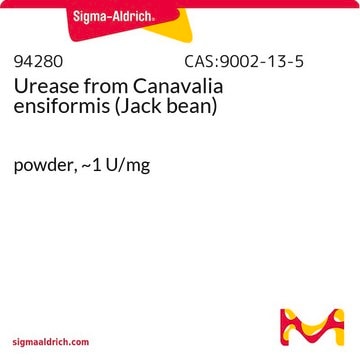54103-U
Supelclean™ ENVI-Carb™ II/PSA SPE Tube
bed B 500 mg (Supelclean™ PSA SPE), bed A 500 mg (Supelclean™ ENVI-Carb-II SPE), volume 6 mL, pk of 300
Synonym(s):
Carbon/PSA SPE cartidge, 6 mL
About This Item
Recommended Products
material
PE frit (20 μm porosity)
polypropylene hardware
product line
Supelclean™
composition
bed A, 500 mg (Supelclean™
ENVI-Carb-II SPE)
bed B, 500 mg (Supelclean™
PSA SPE)
packaging
pk of 300
technique(s)
solid phase extraction (SPE): suitable
volume
6 mL
matrix active group
PSA phase
carbon phase
application(s)
food and beverages
separation technique
ion exchange
reversed phase
Looking for similar products? Visit Product Comparison Guide
General description
Sample Matrix Compatibility: Organic or aqueous solutions
- Dual layer SPE tube that contains both Supelclean ENVI-Carb (upper layer) & PSA (lower layer) SPE sorbents (separated by PE frit)
- Developed to offer superior clean up when conducting multi-residue pesticide analysis from food (e.g. agricultural products, meats, etc.).
- ENVI-carb has a strong affinity towards planar molecules, and can isolate/remove pigments (e.g., chlorophyll and carotinoids) and sterols commonly present in foods and natural products
- Supelclean PSA is a polymerically bonded, ethylenediamine-N-propyl phase that contains both primary and secondary amines
- Supelclean PSA has a strong affinity and high capacity for fatty acids, organic acids, and some polar pigments and sugars
- Tested for superior cleanliness using GC-FID and GC-MS
Legal Information
Signal Word
Danger
Hazard Statements
Precautionary Statements
Hazard Classifications
Eye Dam. 1 - Skin Sens. 1 - STOT RE 2 Inhalation
Target Organs
respiratory tract irritation
Storage Class Code
11 - Combustible Solids
WGK
WGK 1
Flash Point(F)
Not applicable
Flash Point(C)
Not applicable
Choose from one of the most recent versions:
Already Own This Product?
Find documentation for the products that you have recently purchased in the Document Library.
Customers Also Viewed
Articles
SPE retention mechanism in this case is based on the electrostatic attraction of charged functional groups of the analyte(s) to oppositely charged functional groups on the sorbent.
Reversed-phase interaction will retain most molecules with hydrophobic character; it is very useful for extracting analytes that are very diverse in structure within the same sample.
Protocols
Normal-phase SPE separates analytes based on polar interaction with sorbents in diverse sample matrices.
Our team of scientists has experience in all areas of research including Life Science, Material Science, Chemical Synthesis, Chromatography, Analytical and many others.
Contact Technical Service











